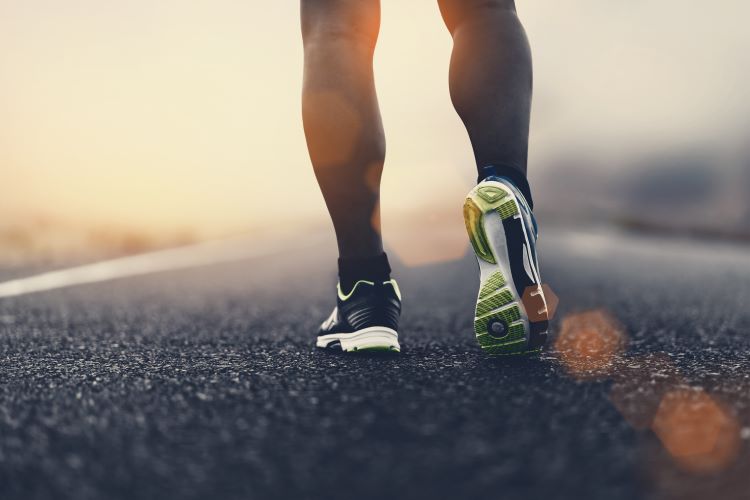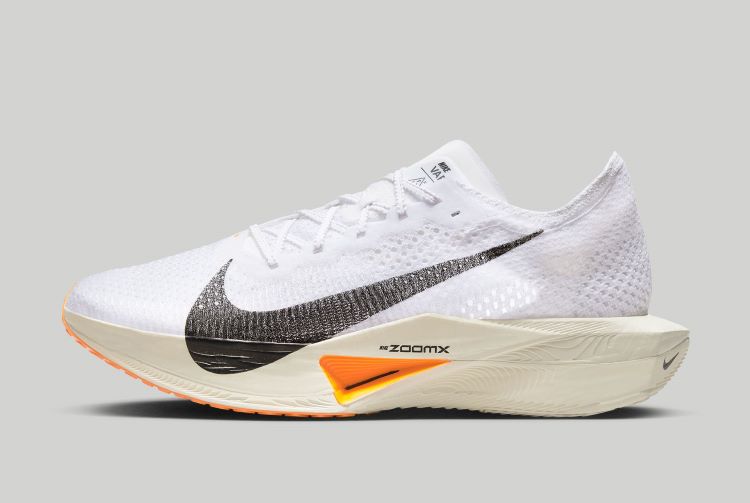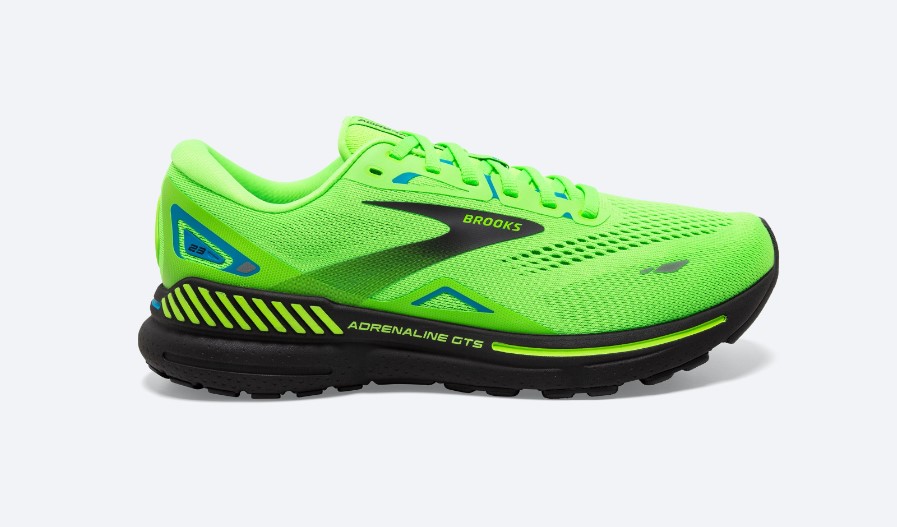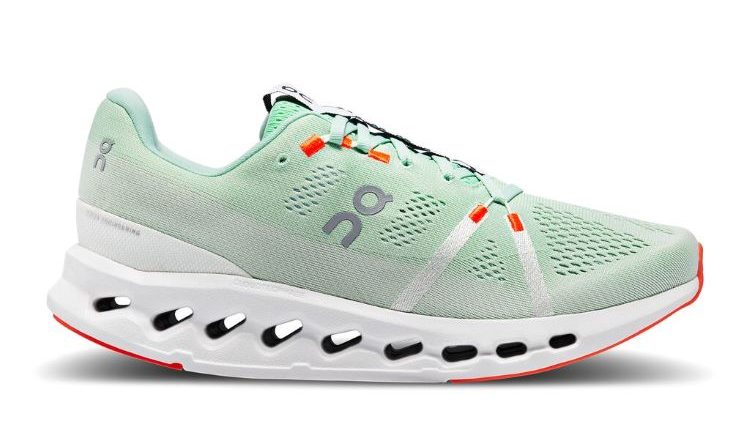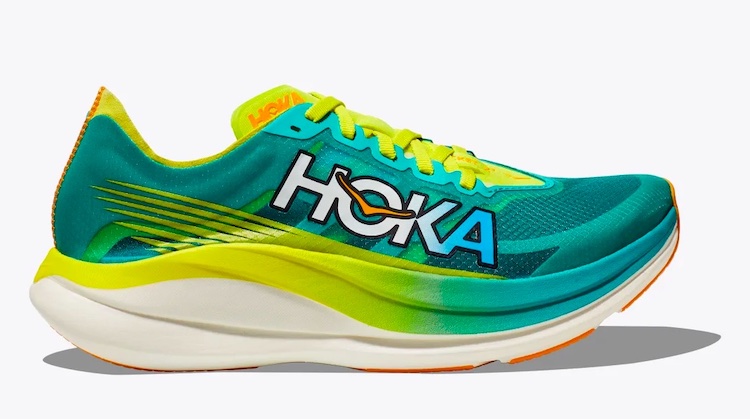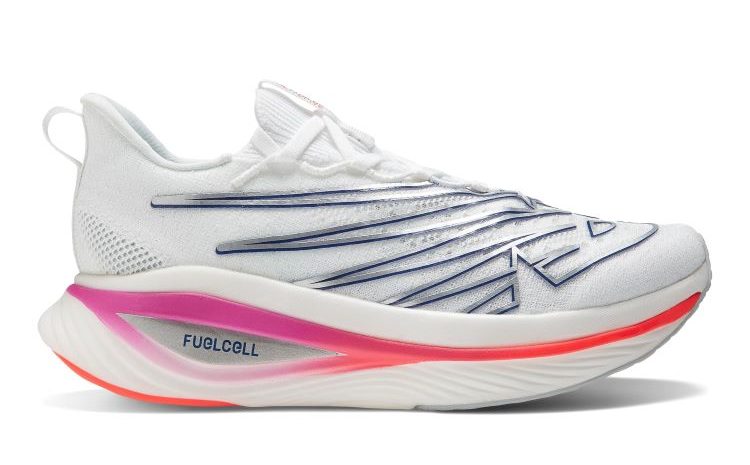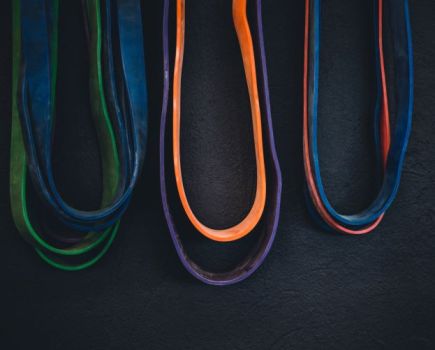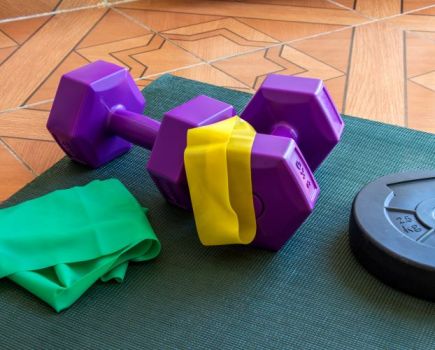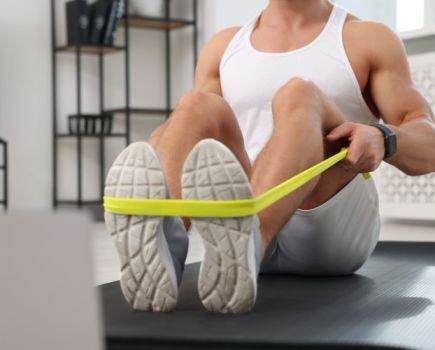Whether you’re chasing a fastest 5K or a marathon PB, these are the best running shoes for the job.
When it comes to upping the mileage or smashing your PBs as part of your new year’s fitness resolution, donning a pair of the best running shoes can make a huge difference. Alongside keeping your feet comfortable while pounding the pavements or hitting the trails, modern trainers also offer a range of features to enhance your stride, every step of the way.
To help you put your best foot forward, we put a selection of the latest running shoes through their paces – here’s the cream of the crop.
These are the best running shoes you can buy right now
Running shoes mean different things to different people, but one thing our testers could all agree on was the Nike Vaporfly 3 is a fantastic shoe, and the best for fast runners. That doesn’t necessarily mean racers though; anyone looking to improve their running could benefit from Nike’s carbon super shoe. Whether that’s looking for pacier parkruns or chasing longer distance PBs, you’ll feel a better and faster runner in these shoes.
Other running shoe recommendations
| Best running shoes for neutral runners: | If you’re looking for a comfortable cruising shoe, look no further than the Brooks Ghost Max. DNA Loft V2 cushioning and a GlideRoll rocker combine to create a super-comfy ride that still has a spring in its step. |
| Best running shoes for maximum cushioning: | The best max-cushioned shoe we’ve tested is the ASICS Novablast 4, which is a daily trainer that packs an impressive amount of punch. |
| Best running shoes for overpronators: | Brooks’ Adrenaline line has been going for decades, and the Brooks Adrenaline GTS 23 takes its stability for overpronators to new heights, with its unique GuardRail to help you keep your form as you tire. |
| Best running shoes for off-road trails: | The Salomon’s S/Lab Genesis shoe is a great off-road all-rounder, with enough cushioning to help you clock up the miles in comfort with good grip and propulsion on most surfaces. |
How we test the best running shoes
Our testers put each shoe through their paces over a mixture of distances and paces to see where they excel, and clocked up significant distances in each one to examine how they wear over time. Each reviewer focused on speed, stability and comfort during test runs, while also assessing the effectiveness of any high-tech features on offer. Their detailed reviews are sure to help you choose the right running shoe for you.
1. Nike Vaporfly 3
Men’s Fitness verdict
We’d have forgiven Nike for making a carbon copy of its excellent v2 super shoe. Instead it’s made refinements that may divide opinion but there’s no doubting the racing pedigree of the Vaporfly 3.- Light, punchy and energetic
- Softer midsole for more protection
- Lost some stiffness
- Less secure fit
| Materials | ZoomX foam; Carbon fibre flyplate |
| Weight | 6.9 |
| Colours | White and Particle Grey / Sail and Orange |
The Nike Vaporfly 3 maintains its lightweight design, combining a carbon plate with Nike ZoomX foam, but with notable changes. More ZoomX foam in the midsole, along with a redesigned heel and improved midfoot stability, enhance the shoe’s performance. The new Flyknit uppers are lighter and more breathable, while the outsole features a thinner rubber covering with a waffle design for improved grip.
It’s the lightest carbon shoe available, and despite retaining a 40mm/32mm stack height, it offers a more stable platform. In testing over 50 miles, including a marathon, it performed exceptionally well, providing cushioned protection but with a slightly softer ride compared to the Vaporfly 2. While it’s still agile and fun, offering better breathability, it sacrifices some race-focused responsiveness for versatility and comfort. Overall, the Vaporfly 3 is a great option for various distances, offering improved stability and protection.
- Read our full Nike Vaporfly 3 review
2. Brooks Adrenaline GTS 23
Men’s Fitness verdict
If you’re an overpronator looking for a reliable stability shoe for mixed daily training, we can recommend the GTS 23. It’s not quite light or sprightly enough for regular high tempo efforts though.- Well balanced
- GuardRail gives support to overpronators
- Four widths to choose from
- A little too heavy for pacey runs
| Materials | 60% recycled materials |
| Weight | 10.1oz |
| Colours | Peacoat / Green Gecko / Black & Hawaiian / Black & Ebony / Blue |
The Brooks Adrenaline GTS 23 offers significant updates from its predecessor, focusing on stability and comfort. It replaces the old firm rubber insert with a guide rail around the midsole, promoting proper foot spreading and strengthening. This design aids overpronators by encouraging a more balanced push-off. The shoe’s balanced feel and subtle cushioning, especially under the forefoot, promote correct running form for various paces and distances.
Compared to the GTS 22, it features a slightly softer DNA LOFT v2 midsole and a wider forefoot for a plush yet responsive ride. Weighing just over 10oz, it’s suitable for everyday training, offering comfort and reliability. With approximately 60% recycled materials in the uppers and various width options, it’s a solid choice for stability-seeking runners, especially at its price point.
- Read our full Brook Adrenaline GTS 23 review
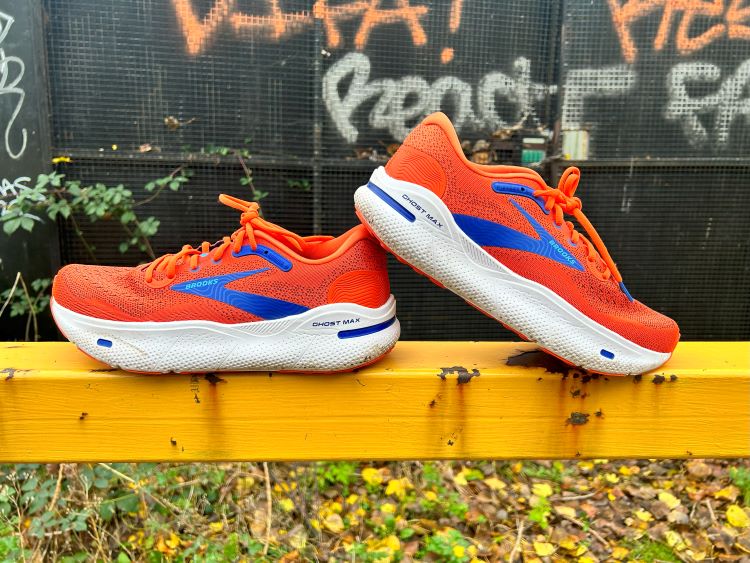
3. Brooks Ghost Max
Men’s Fitness verdict
The Ghost Max has real comfortable cruiser credentials with a consistent, stable ride, but there’s not enough pop when you want to pick up the pace.- Comfortable fit
- Mild but nicely rockered ride
- Good stability
- Midsole foam is a little dull
- Not one for tempo work
- Could be lighter
| Materials | DNA Loft V2, 56.4% recycled uppers |
| Weight | 10oz / 283.5g |
| Colours | Red orange, crown blue, black, black and atomic blue |
The Brooks Ghost Max, similar to the Ghost and Glycerin 20, offers a nice blend of comfort and performance. Available in two width options, it suits narrow feet well, with ample space in the toe box and no heel slippage issues. Featuring a higher stack of DNA Loft v2 cushioning compared to the Ghost 15, it provides a stable and protective platform, enhanced by the GlideRoll Rocker for smooth transitions.
While the cushioning may feel slightly dull compared to the Glycerin 20’s livelier foam, the Ghost Max excels in easy-paced runs, offering a smooth and consistent ride. However, it may lack responsiveness for faster runs. It offers reliable grip on various terrains, making it suitable for most runner’s needs.
- Read our full Brooks Ghost Max review
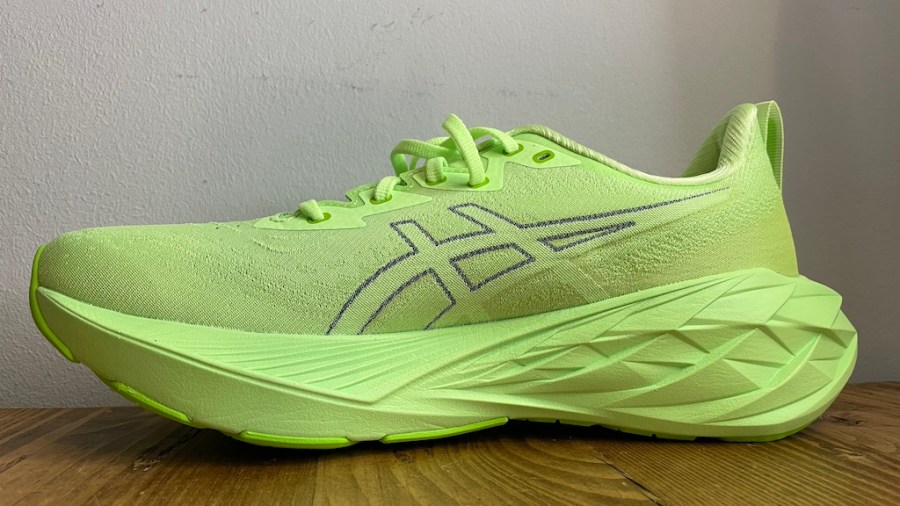
4. ASICS Novablast 4
Men’s Fitness verdict
A big improvement on its predecessors, with more responsiveness despite big cushioning. If you like maximal shoes with a softer edge you’ll likely enjoy this shoe.- Big, cushioned comfort
- More responsive ride than the Novablast 3
- A bit on the bulky side
- Sometimes a bit too soft
| Materials | Upper made from at least 75% recycled materials; FF BLAST™ PLUS ECO cushioning made with 20% bio-based content |
| Sizes | 6 – 15 (US) |
| Weight | 9.4oz |
| Colours | 7 available |
The ASICS Novablast 4 maintains its bulky appearance but introduces significant updates. Featuring FlyteFoam Blast + Eco midsole foam with recycled materials, it enhances stability and transitions with a more aggressive rocker. The engineered woven upper offers improved stretch and durability. The shoe’s design now includes higher side walls, an upward-sweeping toe box, and neoprene-like tongue wings for better foot wrap. With AHAR rubber outsole for grip, it’s labeled with CO2e at 11.2kg.
Despite a slightly increased weight from the previous model, it remains lighter than competitors like Gel Nimbus 25 and Brooks Ghost Max. Priced at $140, it maintains its cushioned comfort but feels firmer and more responsive, suitable for various paces. While still bulky, the wider base enhances stability. Overall, Novablast 4 is an upgrade, appealing to fans of maximal, cushioned shoes with added responsiveness.
- Read our full ASICS Novablast 4 review
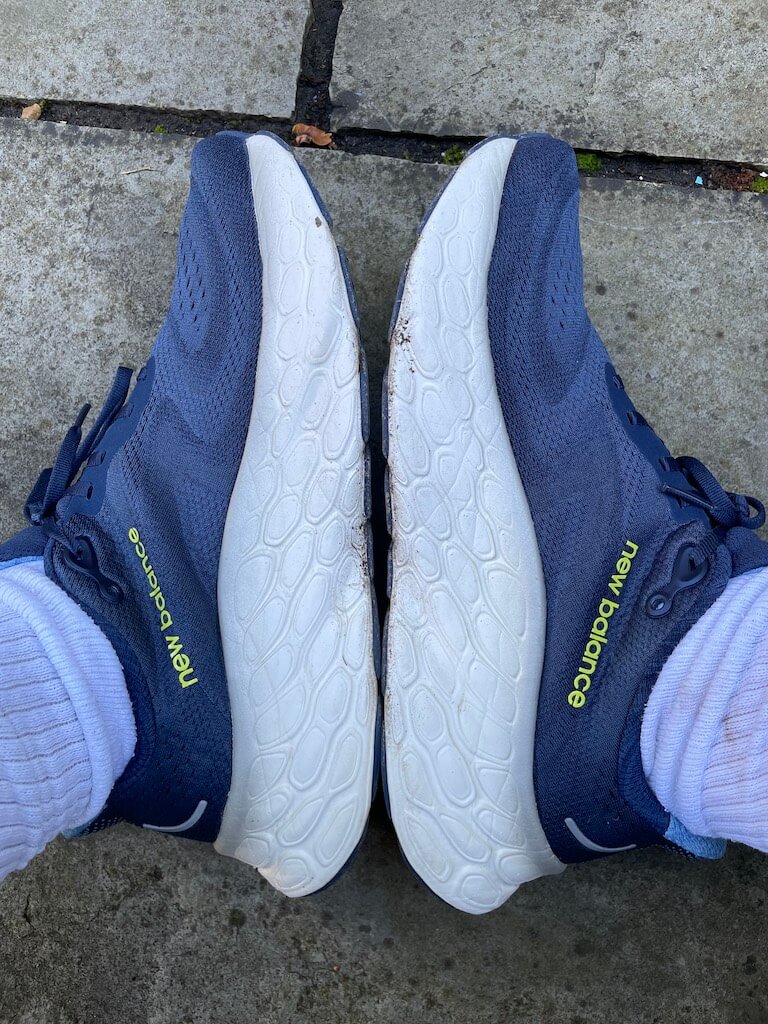
5. New Balance Fresh Foam X More v4
Men’s Fitness verdict
The ultra-cushioned X More v4 ticks all the boxes as a daily mile-eater, but is too big, if not too heavy, for pacier sessions. A great choice for beginners though.- Surprisingly light feel, despite the midfoot cushioning
- Ideal for building up distance while minimising impact on joints
- Heavy cushioning will divide opinion
- Narrow fit may cause rubbing
| Materials | Fresh Foam X midsole; Engineered mesh upper (made of 50% or more recycled materials) |
| Sizes | 7-15 (US) |
| Weight | 10.4oz |
| Colours | Black with Phantom / Arctic Grey with Natural Indigo / Cobalt with Black |
The New Balance Fresh Foam X More v4 offers lightweight yet ample cushioning, ideal for entry-level runners aiming to increase their distances while reducing impact-related injuries. However, potential issues arise with its narrow fit and built-up midsole cushioning, causing discomfort and rubbing on the inside of the foot, especially for pronators.
While that may not affect all runners and provides extra protection for some, it obstructs natural gait for others. If you get the fit right and rubbing isn’t an issue, it excels in providing a comfortable ride for slow and steady miles, making it suitable for training sessions but less so for races due to its maximalist cushioning.
- Read our full New Balance Fresh Foam X More v4 review
6. On Cloudsurfer 7
Men’s Fitness verdict
The Cloudsurfer 7 is one of those rare beasts: a dedicated daily trainer than can handle harder, faster efforts too. It may be a bit pricier than its peers but that gets you great versatility.- Light and lively
- Great versatility
- Well balanced cushioning
- A bit narrow across the midfoot
- Squeaks when wet
| Materials | Helion™ superfoam midsole; Rubber outsole |
| Weight | 8.4oz |
| Colours | White Frost / Black / Flame White / Black Cobalt / White Sand |
The On Cloudsurfer 7 is a top-tier daily trainer, offering a lightweight, comfortable, and well-balanced ride suitable for various training efforts. A notable update lies in its revamped midsole featuring CloudTec Phase technology, which delivers softer landings and springier toe-offs. The shoe boasts a soft dual-layer mesh upper for excellent step-in comfort, although its narrow fit might pose issues for wider feet.
Despite its light weight, it maintains durability and reliable grip with a thin rubber outsole. Weighing 8.4oz, it competes favorably with similar trainers on the market. Tested over 30-plus miles on various terrains, it proves versatile with a responsive, stable, and cushioned ride. Priced at £150, it offers great value for its versatility, making it suitable for both easy runs and faster efforts, ideal for runners seeking a dependable shoe for all types of training sessions.
- Read our full On Cloudsurfer review
7. Hoka Rocket X 2
Men’s Fitness verdict
Its well-balanced ride makes this a versatile shoe for a range of speeds and distances. That it’s one of the cheapest super shoes going makes the Rocket X 2 even more compelling.- Springy and lively ride
- Good versatility
- Relatively stable for a carbon shoe
- Very tight fit
- Not as propulsive as some rivals
| Materials | Technical synthetic mesh upper; Carbon fibre plate |
| Weight | 7.8oz |
| Colours | Ceramic / Evening Primrose |
The Hoka Rocket X 2 presents a race-ready design with a synthetic mesh upper, gusseted tongue, and internal foot cage ensuring a secure fit. However, its narrow fit and tight entry may pose challenges for those with wide feet or high insteps. Once on, it offers a comfortable and locked-in feel, providing excellent stability even during tight turns. The zonal outsole rubber reinforcements enhance grip and durability.
It’s one of the lightest carbon shoes, offering a compact, agile, and nimble ride reminiscent of early Nike Vaporfly models. With a stack height of 36mm/31mm and a 5mm drop, it provides a subtle yet stable platform for running. Tested over 50 miles, it excels as a race shoe, offering a balanced, energetic, and versatile performance suitable for various paces and distances.
- Read our full Hoka Rocket X 2 review

8. Under Armour Flow Velociti Elite
Men’s Fitness verdict
If you race short to middle distances UA’s first carbon racer will help you make big strides towards new PBs. If you can justify the price, it could be a luxury daily trainer too.- Light and roomy
- Encourages fast foot turnover
- Good stability for a super shoe
- Lacks the punch of top carbon racers
- A little firm over long distances
| Materials | Flow foam; WARP 2.0 mesh upper; carbon plate |
| Weight | 8.4oz |
| Colours | Black & White / White & Beta / White & Sonar Blue / Aqua Foam & Lime Surge |
The Under Armour Velociti Elite features a full-length carbon fiber plate within an 8mm drop midsole with a heel-to-toe stack of 39mm/31mm, offering a balance of cushioning and responsiveness. Its durable and grippy supercritical Flow foam eliminates the need for an outsole, while a TPE sockliner adds cushioning. The minimal WARP 2.0 mesh upper provides support and structure, with a roomier fit compared to other carbon race shoes.
It’s heavier than some competitors, but maintains a compact and secure feel on the foot. Tested over 100-plus miles, it offers a firm and direct ride, lacking the energetic punch of other carbon shoes but providing stability. While it may not offer marathon-level protection, it excels at faster paces and shorter distances, making it suitable for fast daily training sessions rather than intense racing.
- Read our full Under Armour Velociti Elite review
9. New Balance Fuelcell SuperComp Elite V3
Men’s Fitness verdict
We’re impressed with just how well balanced the SC Elite V3 feels over a range of distances, and that it doesn’t lose stability at the expense of speed.- Feels fast, smooth and energetic
- Light and agile race feel
- Good stability for a carbon racer
- A little narrow
- Not as punchy as some carbon racers
| Materials | EVA/TPU foam midsole; Carbon plate |
| Weight | 7.6oz |
| Colours | Yellow and Orange / White / Red and Blue |
The New Balance Fuelcell SuperComp Elite V3 is well worth a look if you’re hunting for a shoe that packs marathon PB potential. An impressive upgrade to the RC Elite V2, we found it to be light, agile and built for speed, making it another excellent carbon shoe designed for guns-blazing race-day miles.
It’s lively, energetic and responsive with snappy transitions and a smooth turnover at top paces. We think there’s just enough cushioning too and when fatigue inevitably kicks in and form goes ragged, it’s more stable and forgiving than some carbon super shoes, and that boosts the Elite V3’s marathon credentials.
- Read our full New Balance Fuelcell SuperComp Elite V3 review
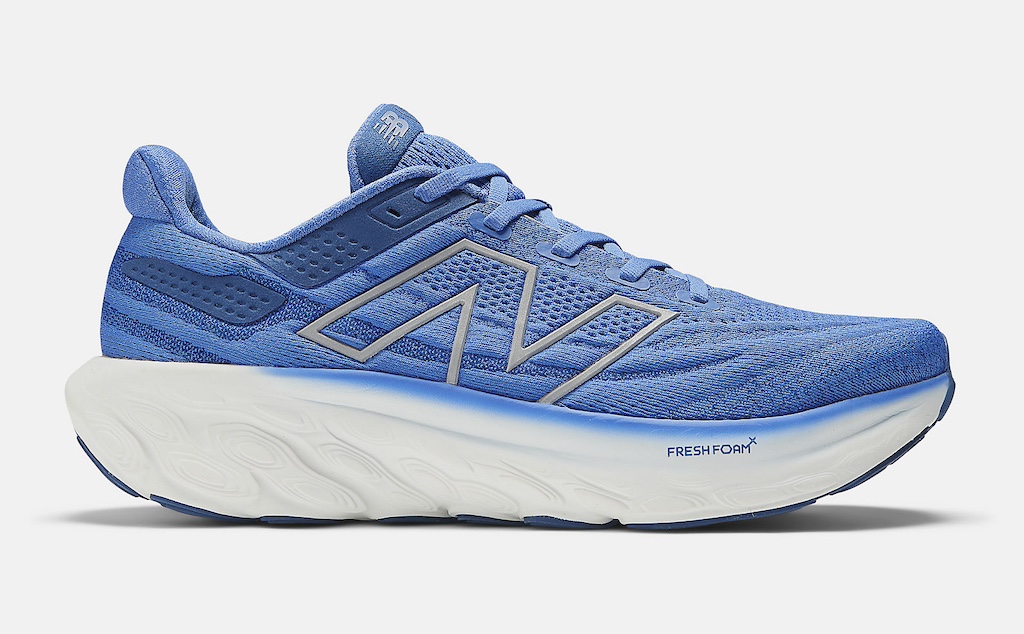
10. New Balance Fresh Foam X 1080 v13
Men’s Fitness verdict
It’s lighter than its predecessor, with more midsole foam, and although it delivers comfort in spades the 1080 v13 may have dug itself a hole in terms of versatility.- Big, cushioned comfort
- Plush, padded uppers
- Lacks a bit of energy
- Not as versatile as some daily trainers
| Materials | Fresh Foam X midsole; Ndurance rubber outsole |
| Weight | 260g / 9.2oz |
| Colours | Marine blue with night sky / black with white / black with blacktop / grey matter with shadow grey / starlight with marine blue |
Taking the trademark comfort of New Balance’s 1080 line and dialling it up even further, the Fresh Foam X 1080 v13 is the perfect choice for long, slow runs, in our opinion.
Naturally, the focus on big cushioning means anyone wanting to run light and fast will be better served elsewhere, but for anything at easy, conversational pace, we reckon you won’t find a more comfortable option than this.
- Read our full New Balance Fresh Foam X 1080 v13 review

11. Altra Outroad 2
Men’s Fitness verdict
It may not be the most nimble or responsive trainer, but the Outroad 2 combines a stable platform, deep cushioning and decent grip for those slower training miles that take you off the beaten track.- Roomy toe box
- Wide platform to run off
- Plush uppers
- Not very agile
- Quite firm underfoot
| Materials: | Altra EGO™ midsole, MaxTrak™ outsole |
| Weight: | 10.6oz / 286g |
| Colours: | Grey and green, blue and yellow, red and black, neon and blue |
A wide platform, zero-drop design and roomy toebox are standout features to us on the Altra Outroad 2. If you’re after a plush road-to-trail runner and aren’t too concerned with out-and-out speed or agility, the Outroad 2 will keep you cruising in comfort.
We found it offered good grip on a range of surfaces, alongside a lightweight feel and balanced cushioning, thanks to that 27mm EGO midsole foam. Overall, it’s a real mile-muncher at a decent price.
- Read our full Altra Outroad 2 review
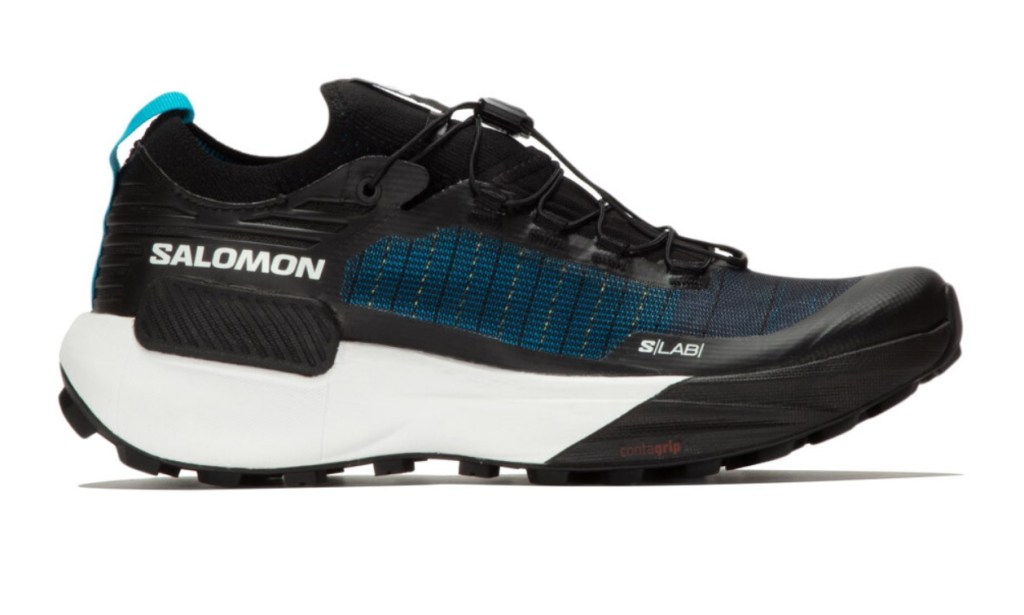
12. Salomon S/Lab Genesis
Men’s Fitness verdict
The Salomon S/Lab Genesis is a dependable all-round trail shoe. It’s solid, stable and comfortable, but not suited to the sort of extreme mud you find on some cross-country courses.- Great ground feedback and surface engagement
- Ideal for long and easy mixed-terrain trail runs
- Comfortable to wear on and off the trails
- Hard wearing and durable
- Not a PB-setting shoe due to lack of propulsion and bounce
- 4.5mm lugs struggle in really muddy conditions
- Not suited to highly technical trails
| Materials: | Matryx mesh, EnergyFOAM midsole, Contragrip outsole |
| Weight: | 9.5oz / 269g |
| Colours: | Black, white and blue danube |
The Salomon S/Lab Genesis is a trail shoe that can take you miles off the beaten path, with a rugged Kevlar-infused construction that’ll protect your feet on day-long adventures. There’s a lightweight, highly breathable Matryx mesh upper, responsive EnergyFOAM midsole and a lugged Contragrip outsole for coping with the toughest conditions the trail can throw at you.
This may not be the shoe for setting trail-running PBs, but it will be one that propels you towards the horizon when other off-road shoes would have you heading for home.
- Read our full Salomon S/Lab Genesis review
How to find the right running shoe for you
Every runner’s biochemistry is unique, which means certain shoes will be perfect for some and terrible for others. That said, there are three key things everyone needs to consider when trainer shopping.
- Firstly, the shoe should fit your foot snugly, without having to do the laces up tight.
- Secondly, the shoe should naturally flow with your stride (and make you want to run faster).
- Finally, the shoe should fit your running mechanics, meaning if you start to feel irritation in areas that have bothered you in the past, that’s a sign you’re not wearing the right pair.
When is the best time to run?
A new study from sportsshoes.com has revealed that 7pm on a Sunday – in April or October, to be specific – is the most popular time for smashing PBs. The research looked at the time that 35,000 social media users posted PB photos, using over 15 hashtags relating to personal bests, and cross-referenced the posts with the fitness activities they depicted, to reveal the most successful times.
What to look for in the best running shoe, according to the experts
We talked to athletes and coaches about what to consider when buying a pair of running shoes. HYROX master trainer and 247 Represent head coach and athlete Jake Dearden and New Balance athlete and online running coach Jonny Mellor give us their opinions:
How do I make sure I get the correct size?
Jake Dearden: I’d recommend buying half a size up when it comes to running trainers. This is to avoid blisters, especially if your feet swell up on longer runs which is due to the increased blood flow.
Jonny Mellor: A properly fitted running shoe should feel snug in the heel and midfoot, with some room for toe movement. To check proper length when standing you should allow a full thumb width of space between the end of your toes and front of the shoe. This is why often runners are recommended to purchase half a size bigger than a normal every-day shoe. However it’s not always the case, depending on the brand, so it is a good idea to get your feet properly measured by a running specialist store.
What are neutral or supportive shoes? Is more cushioning better?
JD: Neutral shoes are designed for runners with average sized arches and provide a normal amount of support to your foot. Stability shoes are designed for runners with low arches that cause their feet to excessively roll inward with each stride (called “overpronation”). I’d suggest getting assessed by a qualified physio and ask them what type of shoe you need. Most of the time you’ll need a neutral shoe paired up with some lower body mobility and stability exercises to improve your running form. More cushion isn’t always better as for some people it can make your stride more inefficient.
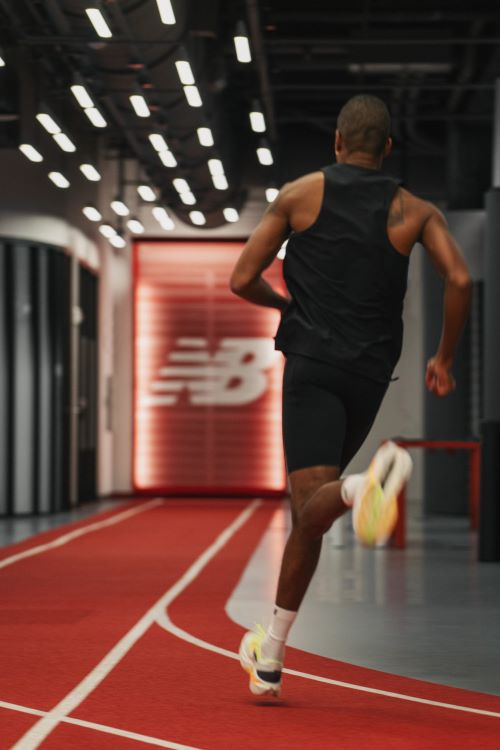
JM: In terms of more cushioning, this will depend on the individual runner and what type of running you’re planning on doing. Some runners prefer a faster, more responsive feel underfoot over more cushioning. This is personally why I love the New Balance 1080v13 as it feels really soft and cushioned but still feels fast and responsive. If you’re doing lots of miles on the roads or pavement, then you may benefit from a more cushioned running trainer.
Do I need to worry about a shoe’s stack height, drop and weight?
JD: If you are starting out running I wouldn’t worry too much about those features, and try to focus on how your shoe is allowing you to run and if you’re comfortable when doing so. Finding the right pair of running shoes mainly comes down to what you feel most comfortable running in.
However, if you are struggling to find ones that work for you it can be worth looking into those features. Trainers with a bigger stack height are more cushioned, helping absorb the impact from running and therefore being easier on your joints. With a lower heel drop you are encouraging a more natural running pattern as it is closer to you being barefoot, the most natural gait form, which will promote midfoot landing as opposed to heel striking which is a more inefficient running technique. If you struggle with knee pain, lower heel drop shoes are often more comfortable and vice versa if you struggle with Achilles issues.
The weight of a shoe is important if you are focusing on speed work. I would always focus on technique and your running form and the other elements of a shoe that allow you to be as efficient as possible before looking into shoe weight.
JM: Again, this will come down to personal preference and what you’ve ran in previously and feel most comfortable running in. It will also depend on your running style, history of injuries and what surface you plan on running on. Runners traditionally go for a lighter shoe for race day or interval work to feel faster and more responsive.
Related content:

